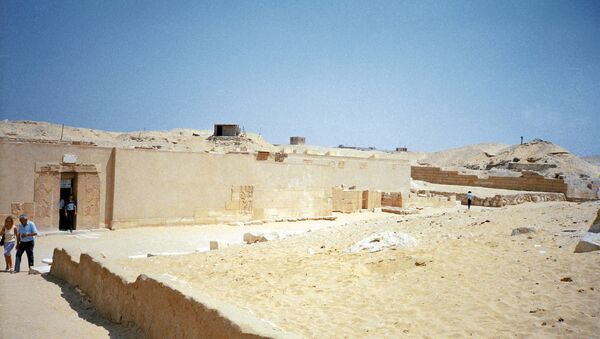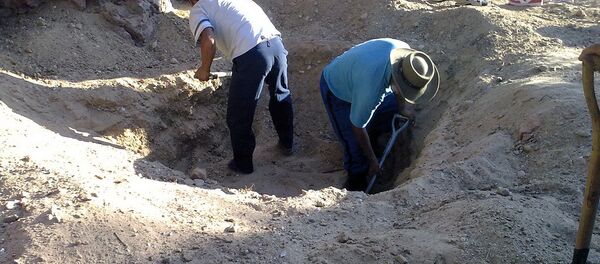A team of Russian archeologists working in Saqqara near Egypt’s Cairo discovered the remains of the so-called "The White Wall" of the ancient Egyptian capital Memphis. Its Ancient Egyptian name was Inbu-Hedj which is translated as "The White Walls."
According to Egyptian Antiquities Minister Mamdouh al-Damati, the finding of the great historic site was made near the town of Mit Rahina, 20 kilometers south of Cairo and near Saqqara which was the necropolis of Memphis.
In addition to the parts of the wall, well-preserved remains of stoves and bronzes were found.
The Head of the Russian archeological expedition Galina Belova, in her turn, explained that now scientists are finishing excavation on the site and will search for other parts of the wall in the coming days. She also expressed hope that "other archeological witnesses of this early period of Ancient Egypt’s history dated back to nearly 3200 B.C." will be discovered.
Egyptian authorities are taking efforts to maintain free and secure conditions for Russian archeologists on the site. The tourist police and Giza security office have boosted security measures. The administration is helping clear the excavation site of modern constructions.
Memphis holds a special place in the history of Ancient Egypt and is believed to the oldest capital of Egypt. The city was founded more than 5,200 years ago by the pharaoh Menes. Memphis was capital of Egypt during the period of the Old Kingdom. Now it is listed as a world historic heritage site.
Located south of Cairo, Saqqara and Mit Rahina have already delivered several important archeological findings. Among them are the stepped pyramid of Djoser and the famous statue of Ramses. Meanwhile, Egyptian and foreign archeological teams continue their work in the area in a bid to uncover new unique monuments.


